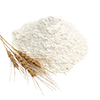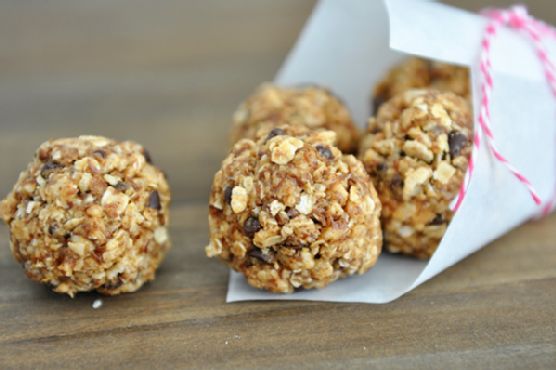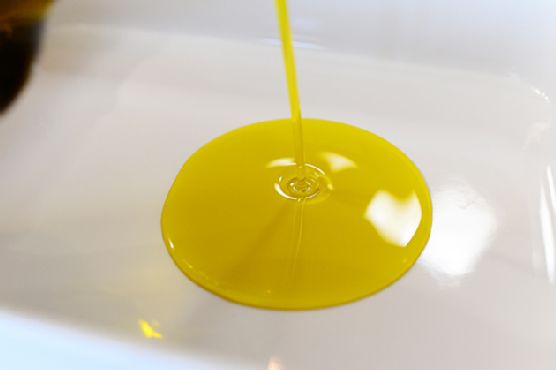Pain au Levain (Sourdough Bread)
Pain au Levain (Sourdough Bread) requires approximately 24 hours from start to finish. For 5 cents per serving, this recipe covers 3% of your daily requirements of vitamins and minerals. Watching your figure? This dairy free, lacto ovo vegetarian, and vegan recipe has 57 calories, 2g of protein, and 0g of fat per serving. This recipe serves 24. A couple people really liked this bread. This recipe from Chocolate and Zucchini has 18 fans. If you have sourdough starter, salt, t80, and a few other ingredients on hand, you can make it. All things considered, we decided this recipe deserves a spoonacular score of 50%. This score is good. If you like this recipe, you might also like recipes such as No-knead Pain Au Levain, Chicken and Shallot Jam on Pain au Levain, and Confession #52: Sourdough is my toughest rival… Artisan Bread with a Sourdough Starter.
Servings: 24
Preparation duration: 60 minutes
Cooking duration: 50 minutes
Ingredients:
85 grams (3 ounces) all-purpose flour
12 grams (0.4 ounces) salt
20 grams (0.8 ounce) 66%-hydration starter (see note)
70 grams (2.5 ounces) starter from the refresher build
210 grams (7.5 ounces) starter from the levain build
20 grams (0.7 ounce) water
230 grams (8 ounces) T80 or T110 or sifted whole-wheat flour (see post for an explanation of the sifting)
360 grams (12.5 ounces) T80 or all-purpose flour
Equipment:
bowl
wooden spoon
mixing bowl
whisk
dough scraper
kitchen towels
measuring cup
baking sheet
pizza stone
oven mitt
knife
oven
Cooking instruction summary:
Place the 20 grams starter in a bowl. Add the 20 grams water and stir with a wooden spoon until diluted. Add the 30 grams flour and stir until thoroughly combined. Cover and set aside at warm room temperature; optimal temperature is 24.5-26.5°C (76-78°F).Eight hours later: add the 55 grams water to the bowl, and stir until diluted. Add the 85 grams flour and stir until thoroughly combined. Cover and set aside at warm room temperature.Eight hours later: in a large mixing bowl, place the 360 grams flour, the starter from the bowl, the salt, and the water. Using a dough whisk or your hand (James MacGuire recommends "using both stirring and grasping movements" then), stir the ingredients until you get a smooth batter with no lumps.Add the remaining flour and stir it in until entirely absorbed. The dough will be rough. Cover and let stand for 5 minutes.Using a flexible dough scraper, fold the dough over itself 8 to 10 times in the bowl, as demonstrated in this video. (If you don't have a suitable scraper, you can use your hand to grab, pull and fold the dough -- this is actually what James MacGuire instructs.) This folding replaces the kneading. Cover and let stand for another 5 minutes.Fold the dough again 8 to 10 times. (It should be about 8:30am now.) Cover and let stand 1 hour.After 1 hour, fold the dough again 8 to 10 times.After 2 hours, fold the dough again 5 to 6 times.After 3 hours, fold the dough again 5 to 6 times.After 4 hours, fold the dough again 5 to 6 times. Notice that the combined folds form a sort of knot at the top of the dough.Have ready a round basket or salad bowl, about 25 cm (10") in diameter. Line it with a clean kitchen towel (not terry cloth) and dust it with flour, lightly but evenly.Using the scraper to loosen the dough from the bowl, turn the dough out onto a lightly floured work surface (I use an old silicon baking mat) so that the "knot" faces down. Flip the dough again into the prepared basket so that the "knot" faces up again. Work gently to avoid deflating the dough.Cover and let stand for 1 1/2 to 3 hours, until the dough is well risen. To test whether the dough is ready to bake, poke it gently with your finger to make a 1-cm (1/2") indentation: if it springs right back, it needs more proofing. If it springs back within 2-3 seconds, it's ready. If it doesn't spring back at all, it's overproofed and should be baked asap; it won't rise in the oven as much as it could have, but you'll live.At least 30 minutes before the rise is complete -- that's hard to tell of course, but over time you'll develop a sense of how long your dough needs to rise -- place a baking stone in the lower part of your oven and preheat it to 230°C (450°F).Five minutes before the rise is complete, place a rimmed baking sheet in the lowest rack of the oven, underneath the pizza stone. Bring about 240 ml (1 cup) water to the boil in the kettle.When the rise is complete, lightly dust a pizza peel with flour. Turn the dough out onto the peel as you would a crème caramel (MacGuire's simile, not mine); work gently to avoid deflating.Using a baker's blade or a sharp knife, score the top of the loaf with shallow marks in a tic-tac-toe pattern, or the pattern of your choice. The scores should not be too deep -- just about 5 mm (1/8").Insert the loaf in the oven and onto the preheated stone, working quickly and closing the oven door again as soon as you can to avoid losing too much heat.Reopen the oven door as briefly as possible to pour the boiling water into the rimmed baking sheet: wear long sleeves and an oven mitt, and use a vessel with a pouring spout, such as a measuring jug, so as not to burn yourself. Close the oven door right away.After 25 minutes, rotate the loaf by a half-turn to ensure even baking. Lower the heat to 175°C (350°F).The loaf should be done after 50 minutes of baking; you can leave it in a little longer if you prefer a darker crust.Transfer to a rack and let rest for at least 4, and preferably 6 hours or overnight, before slicing.
Step by step:
1. Place the 20 grams starter in a bowl.
2. Add the 20 grams water and stir with a wooden spoon until diluted.
3. Add the 30 grams flour and stir until thoroughly combined. Cover and set aside at warm room temperature; optimal temperature is 24.5-26.5°C (76-78°F).Eight hours later: add the 55 grams water to the bowl, and stir until diluted.
4. Add the 85 grams flour and stir until thoroughly combined. Cover and set aside at warm room temperature.Eight hours later: in a large mixing bowl, place the 360 grams flour, the starter from the bowl, the salt, and the water. Using a dough whisk or your hand (James MacGuire recommends "using both stirring and grasping movements" then), stir the ingredients until you get a smooth batter with no lumps.
5. Add the remaining flour and stir it in until entirely absorbed. The dough will be rough. Cover and let stand for 5 minutes.Using a flexible dough scraper, fold the dough over itself 8 to 10 times in the bowl, as demonstrated in this video. (If you don't have a suitable scraper, you can use your hand to grab, pull and fold the dough -- this is actually what James MacGuire instructs.) This folding replaces the kneading. Cover and let stand for another 5 minutes.Fold the dough again 8 to 10 times. (It should be about 8:30am now.) Cover and let stand 1 hour.After 1 hour, fold the dough again 8 to 10 times.After 2 hours, fold the dough again 5 to 6 times.After 3 hours, fold the dough again 5 to 6 times.After 4 hours, fold the dough again 5 to 6 times. Notice that the combined folds form a sort of knot at the top of the dough.Have ready a round basket or salad bowl, about 25 cm (10") in diameter. Line it with a clean kitchen towel (not terry cloth) and dust it with flour, lightly but evenly.Using the scraper to loosen the dough from the bowl, turn the dough out onto a lightly floured work surface (I use an old silicon baking mat) so that the "knot" faces down. Flip the dough again into the prepared basket so that the "knot" faces up again. Work gently to avoid deflating the dough.Cover and let stand for 1 1/2 to 3 hours, until the dough is well risen. To test whether the dough is ready to bake, poke it gently with your finger to make a 1-cm (1/2") indentation: if it springs right back, it needs more proofing. If it springs back within 2-3 seconds, it's ready. If it doesn't spring back at all, it's overproofed and should be baked asap; it won't rise in the oven as much as it could have, but you'll live.At least 30 minutes before the rise is complete -- that's hard to tell of course, but over time you'll develop a sense of how long your dough needs to rise -- place a baking stone in the lower part of your oven and preheat it to 230°C (450°F).Five minutes before the rise is complete, place a rimmed baking sheet in the lowest rack of the oven, underneath the pizza stone. Bring about 240 ml (1 cup) water to the boil in the kettle.When the rise is complete, lightly dust a pizza peel with flour. Turn the dough out onto the peel as you would a crème caramel (MacGuire's simile, not mine); work gently to avoid deflating.Using a baker's blade or a sharp knife, score the top of the loaf with shallow marks in a tic-tac-toe pattern, or the pattern of your choice. The scores should not be too deep -- just about 5 mm (1/8").Insert the loaf in the oven and onto the preheated stone, working quickly and closing the oven door again as soon as you can to avoid losing too much heat.Reopen the oven door as briefly as possible to pour the boiling water into the rimmed baking sheet: wear long sleeves and an oven mitt, and use a vessel with a pouring spout, such as a measuring jug, so as not to burn yourself. Close the oven door right away.After 25 minutes, rotate the loaf by a half-turn to ensure even baking. Lower the heat to 175°C (350°F).The loaf should be done after 50 minutes of baking; you can leave it in a little longer if you prefer a darker crust.
6. Transfer to a rack and let rest for at least 4, and preferably 6 hours or overnight, before slicing.
Nutrition Information:
covered percent of daily need















